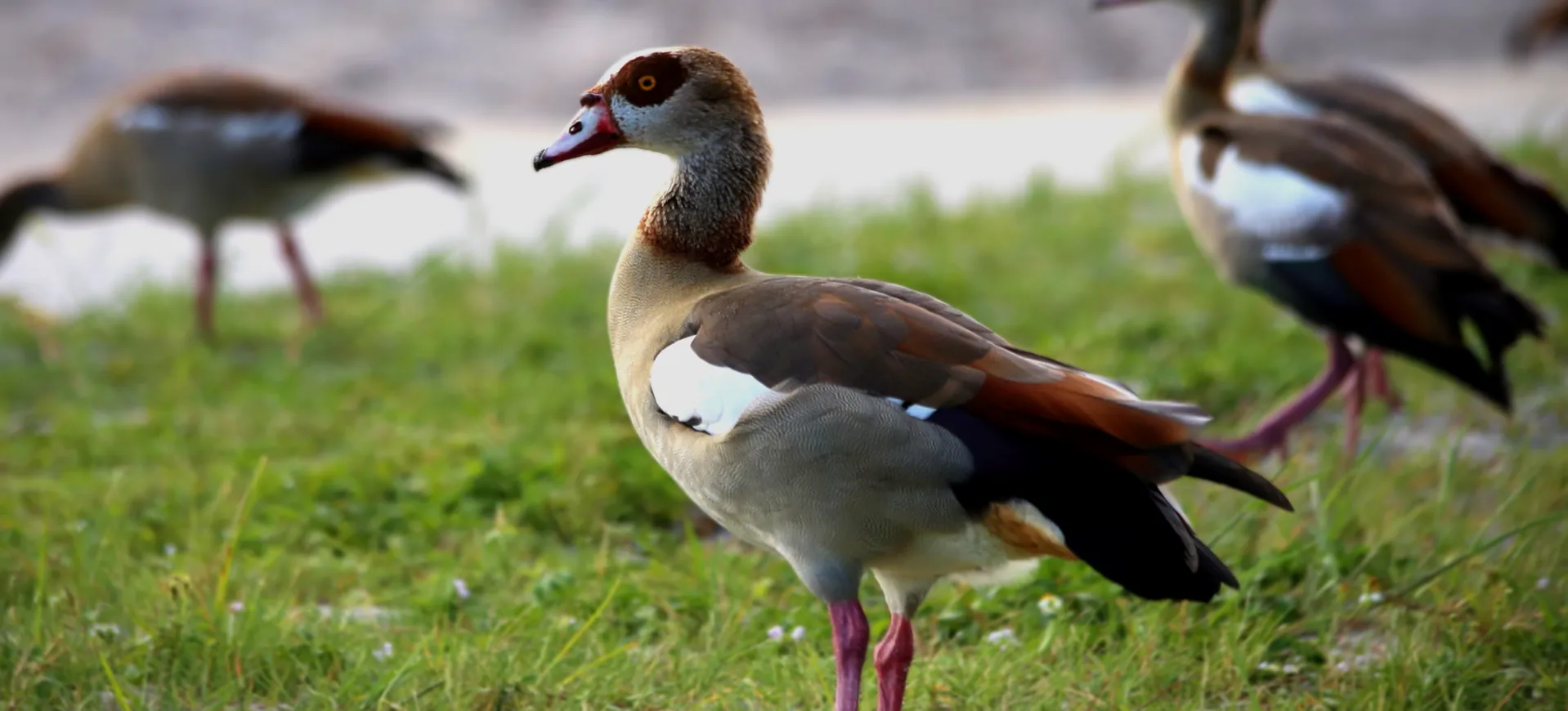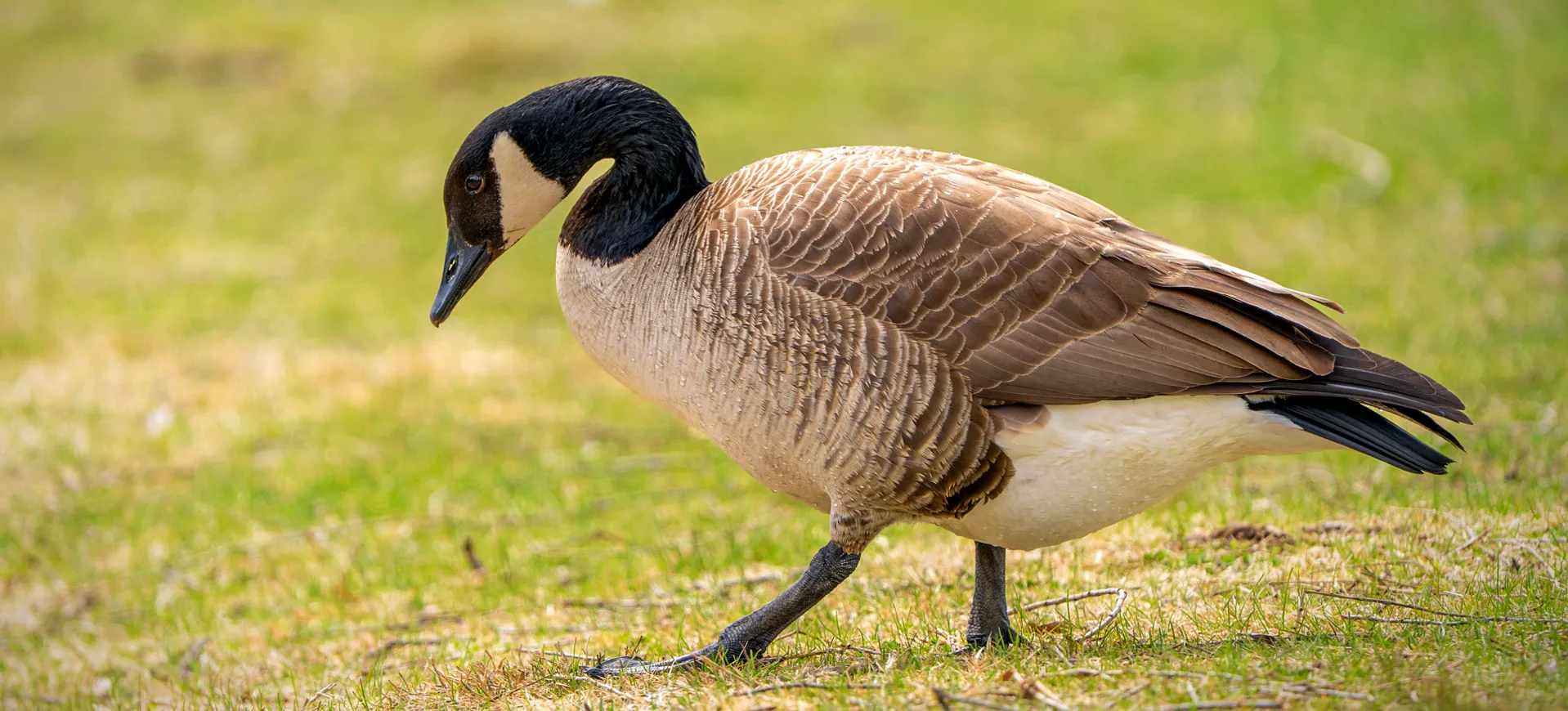Overview
The Coscoroba Swan (Coscoroba coscoroba) is a unique waterfowl, the smallest of the swans yet distinct in its appearance and behavior. Its white plumage, contrasting with its bright red beak and legs, makes it easily distinguishable. Native to South America, this species is found in various wetland habitats, from large lakes to coastal lagoons.
Coscoroba Swans are known for their graceful swimming and flying abilities. Although shorter than other swans, their long necks and compact bodies enable them to maneuver effortlessly in water. These swans are often seen in pairs or small groups, reflecting their social nature.
An intriguing aspect of Coscoroba Swans is their vocalization. Unlike the typical honking of larger swans, they emit a high-pitched, whistling sound. This unique call, often heard during mating and territorial displays, adds to the distinctiveness of the species.
Taxonomy
Kingdom
Phylum
Class
Order
Family
Genus
Species
Type
Physical Description:
Coscoroba Swans are relatively small compared to other swan species, with an average length of about 90 to 115 cm. Their plumage is predominantly white, with black-tipped wings visible in flight. The striking red beaks and legs add a vivid contrast to their appearance.
These swans are adapted for aquatic life, with webbed feet aiding in swimming. Their flight is strong and direct, with slow, powerful wingbeats. Their physical attributes reflect their adaptation to aquatic and aerial environments.

Lifespan: Wild: ~20 Years || Captivity: ~30 Years

Weight: Male: 9.9 - 11 lbs (4.5 - 5 kg) || Female: 7.7 - 9.9 lbs (3.5 - 4.5 kg)

Length: Male & Female: 35 - 45 in (90 - 115 cm)

Wingspan: Male & Female: 57 - 71 in (145 - 180 cm)

Top Speed: 50 mph (80 km/h) in flight
Characteristic:
Native Habitat:
The native habitat of the Coscoroba Swan includes various wetlands across South America. They are commonly found in shallow lakes, marshes, and coastal lagoons, with a preference for freshwater environments. The availability of food sources and nesting sites influences their habitat choice.
These swans also inhabit man-made reservoirs and ponds, showcasing their adaptability to altered landscapes. However, habitat loss and degradation remain significant concerns for the species.
Biomes:
Biogeographical Realms:
Continents:
Diet:
Diet & Feeding Habits:
Coscoroba Swans are omnivorous, feeding on various aquatic plants, insects, and small fish. Their feeding habits are surface-feeding and dabbling, where they tip forward in the water to reach food below the surface.
In their natural habitat, these swans play a role in the ecosystem by controlling aquatic plant growth and providing predatory pressure on small aquatic organisms. Their feeding behavior reflects the species’ adaptability to different food sources available in their habitats.
Mating Behavior:
Mating Description:
Coscoroba Swans form monogamous pair bonds, often lasting for many years. This strong pair bonding is evident through their cooperative behavior in nest building and rearing of young. Courtship displays include mutual preening and synchronized swimming and calling.
The female typically lays four to seven eggs, which are incubated for about 35 days. Both parents participate in the rearing of the cygnets, teaching them to feed and swim. This cooperative parental care is crucial for the survival of the offspring, particularly in the first few months of life.
Reproduction Season:
Birth Type:
Pregnancy Duration:
Female Name:
Male Name:
Baby Name:
Social Structure Description:
The social structure of Coscoroba Swans is centered around their monogamous pair bonds and family groups. These strong social bonds are essential for successful breeding and rearing of young. Outside the breeding season, their social interactions extend to larger flocks, particularly in feeding and roosting areas.
Understanding their social dynamics is important for conservation efforts, as it influences their habitat use and behavior in the wild. Social interactions also affect their response to environmental changes and human disturbances.
Groups:
Conservation Status:
Population Trend:
Coscoroba Swans are typically observed in pairs or small family groups, particularly during the breeding season. They may gather in larger flocks outside of breeding, especially in popular feeding areas. Strong pair bonds and family ties characterize their social structure.
The availability of suitable habitats and food resources influences the population of Coscoroba Swans in the wild. Changes in wetland environments due to human activities can impact population dynamics, emphasizing the importance of habitat conservation.
Population Threats:
The primary threats to Coscoroba Swans include habitat loss and degradation, particularly in wetland areas. Pollution, changes in water levels due to damming, and disturbances from human activities are significant concerns. Additionally, in some areas, they face hunting and egg collection threats.
Climate change threatens their habitats long-term, potentially affecting their food sources and breeding areas. Conservation efforts must address these challenges to ensure the stability of their populations.
Conservation Efforts:
Conservation efforts for the Coscoroba Swan focus on protecting and restoring wetland habitats. Initiatives such as wetland conservation programs and environmental education are vital for the species’ survival. International cooperation is also crucial, given their migratory nature.
Research and monitoring programs contribute to a better understanding of their ecology and inform conservation strategies. Mitigating human-wildlife conflicts and raising awareness about the species are also important components of conservation work.
Additional Resources:
Fun Facts
- Coscoroba Swans are the smallest of all swan species.
- Their red beak and legs are unusual among swans.
- They are known for their distinctive whistling calls.
- Coscoroba Swans are more closely related to geese than to other swan species.
- They are capable of long-distance migration.
- These swans are proficient in both swimming and flying.
- Their diet includes a variety of aquatic plants and small animals.
- Coscoroba Swans play an important role in their aquatic ecosystems.
- They are known for their strong pair bonds and cooperative parenting.
- In some cultures, Coscoroba Swans are symbols of beauty and grace.

















































































